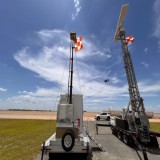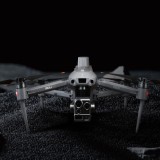
20 May 2024
By Akshata
One of the standout advantages of employing 3D printing in drone manufacturing is the ability to rapidly prototype intricate and complex parts. Companies, like Quantum-Systems, have harnessed this capability to streamline the design and testing process. For instance, when designing an antenna mounting shield, Quantum-Systems collaborated with Shapeways to optimize the part's weight. Through iterative prototyping and experimentation, they achieved an impressive 8-gram weight reduction, transforming the structure into a lightweight, honeycomb design. The rapid prototyping capabilities of 3D printing enable manufacturers to test various parameters such as strength, weight, fit, and usability. This iterative process ensures that the final drone design meets the specific requirements and preferences of clients. The 3D printing workflow facilitates a faster development timeline, allowing manufacturers to work closely with customers on unique projects.
Benefits of 3D Printing for Drone Manufacturing
Weight has always been a critical consideration in aeronautics, and 3D printing provides a compelling solution for drone frames. Lightweight materials not only allow drones to maintain stability in flight but also enhance overall efficiency. The integration of 3D printing into drone manufacturing brings many such benefits:
- Create Lightweight Parts: 3D printing produces parts that are not only light but also exhibit excellent strength, meeting the crucial requirements for drones.
- Complex Design and Assembly: Intricate designs and complex structures can be easily 3D printed, facilitating the testing of new variants and designs with ease.
- Maintenance and Spare Parts: The on-demand nature of 3D printing allows for the swift production of maintenance and spare parts, ensuring minimal downtime for drone operations.
- Mass-customization: 3D printing enables rapid manufacturing with customization at a moment's notice, providing flexibility in meeting varied customer requirements.
- Optimized Design: Highly detailed and accurate 3D printed scale models assist in identifying and addressing design issues that may not be apparent in CAD models alone.
- Access to Adapted Materials: Manufacturers can choose from a broad range of materials, tailoring the drone's properties to meet specific customer requirements.
How Does 3D Printing Improve Drone Design?
The diverse applications of drones in today's world necessitate innovative design solutions. Companies are leveraging 3D printing to enhance drone design in various ways:
- Customized Drones: 3D printing empowers manufacturers to create personalized drones according to specific needs and requirements. This level of customization is unprecedented, allowing for unique solutions tailored to individual preferences.
- Easy Upgradation: The flexibility of 3D printing supports the seamless upgradation of drone parts for increased efficiency. Design iterations are cost-effective and rapid compared to traditional manufacturing processes, fostering a culture of continuous improvement.
- Improved Performance: The weight of a drone directly impacts its flight time and responsiveness. 3D printing facilitates the optimization of design structures and the choice of materials, resulting in lighter drones with improved battery life and agility during flight.
Conclusion
As the drone industry continues to evolve, the integration of 3D printing emerges as a transformative force. The combination of rapid prototyping, lightweight design, and material customization has propelled drone manufacturing into a new era of innovation. Companies like Blue Robotics showcase the tangible benefits of 3D printing in developing revolutionary products, paving the way for a future where customized, high-performance drones become the norm.










